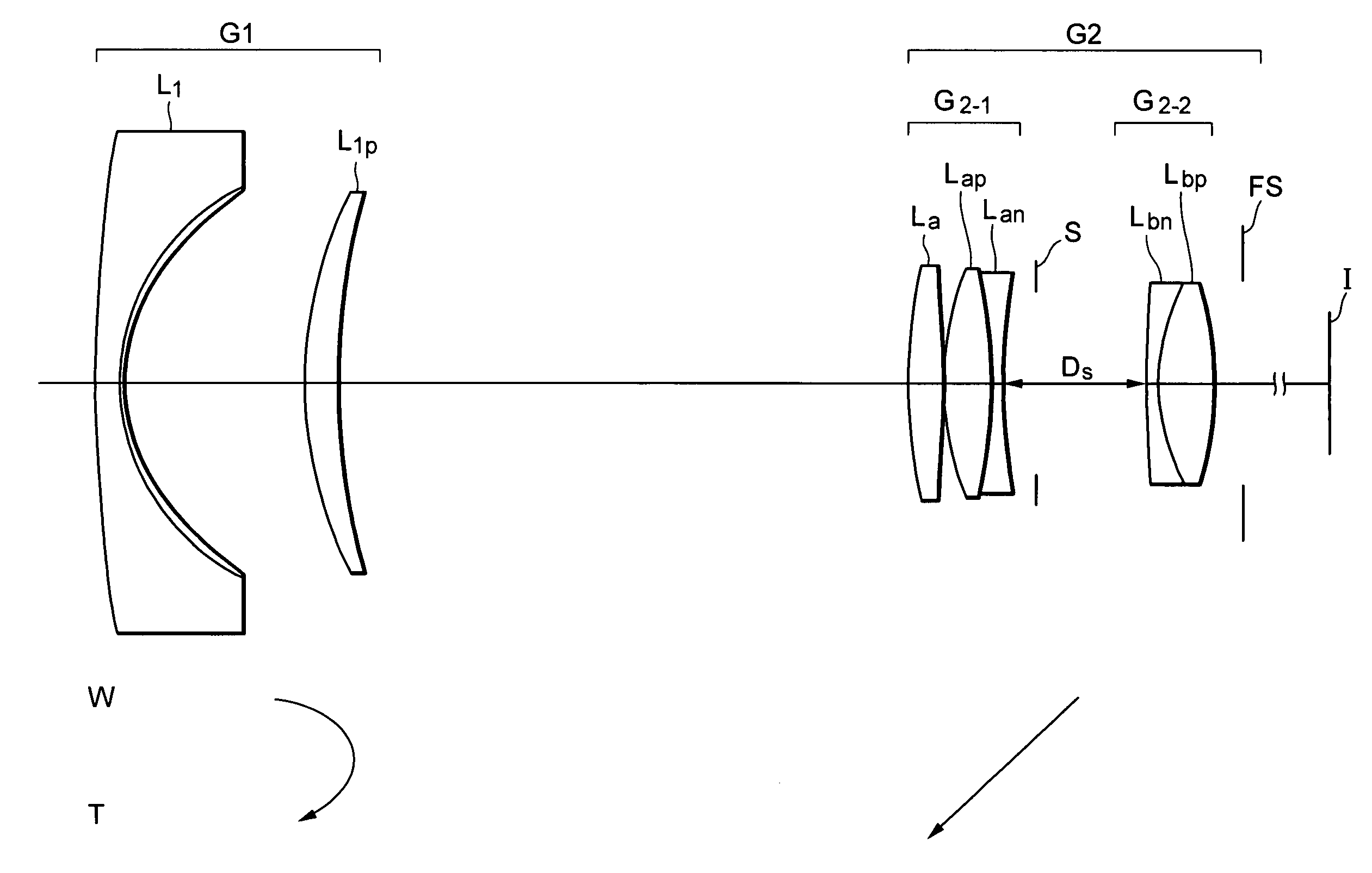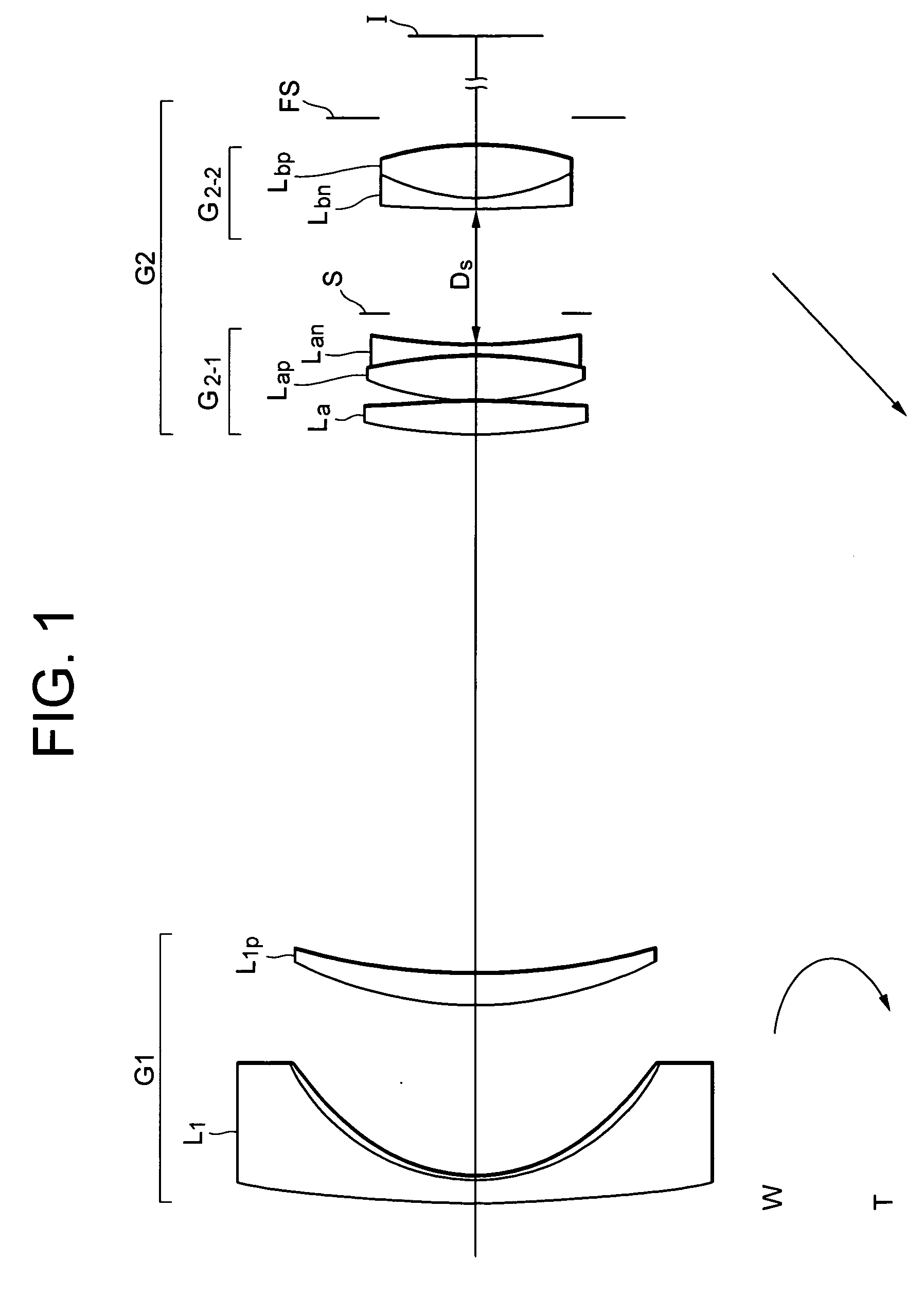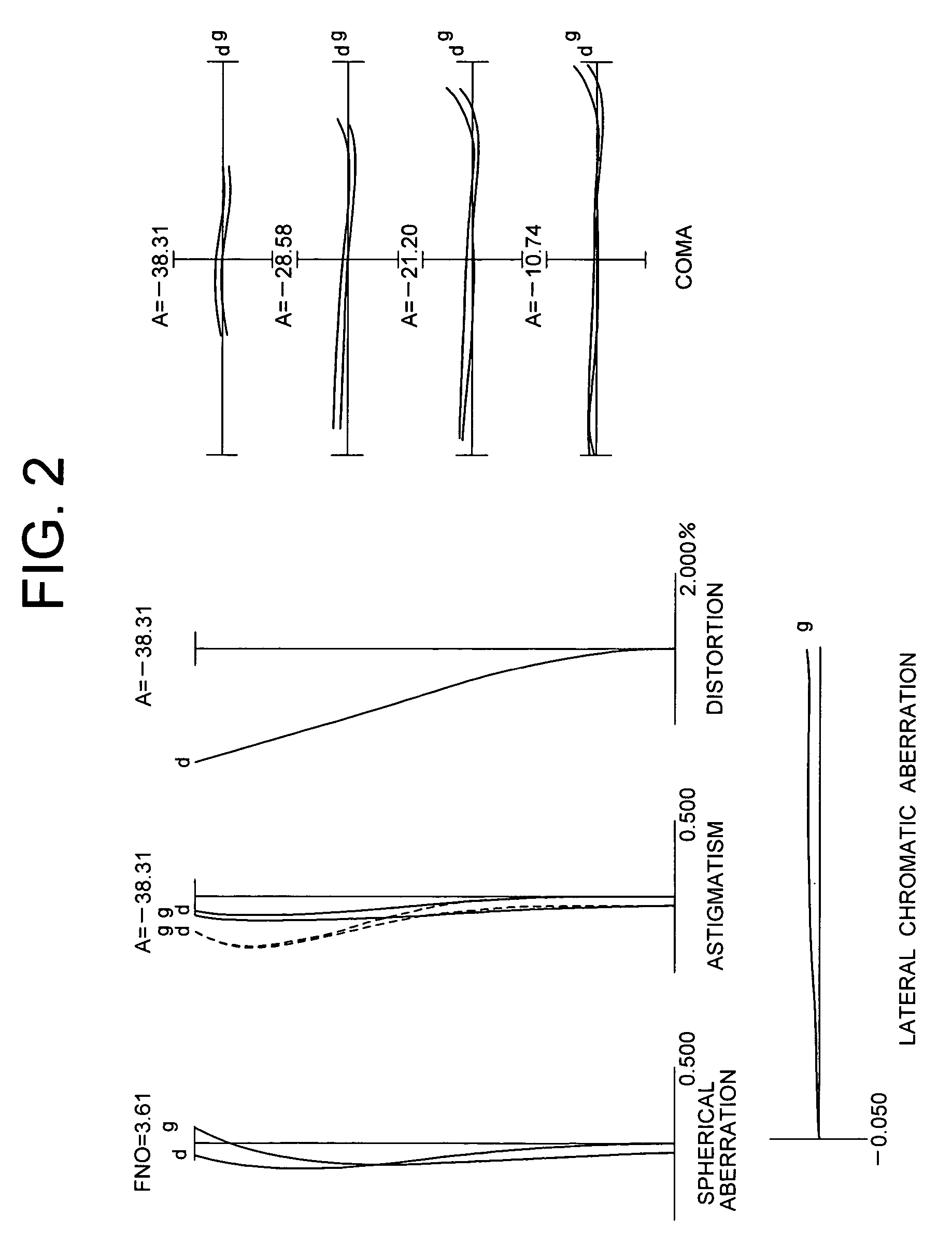Zoom lens system
a zoom lens and lens body technology, applied in the field of zoom lens systems, can solve the problems of difficult manufacturing, high sensitivity to decentering, and insatiable correction of aberration
- Summary
- Abstract
- Description
- Claims
- Application Information
AI Technical Summary
Benefits of technology
Problems solved by technology
Method used
Image
Examples
example 2
[0092] FIG. 5 is a diagram showing the lens arrangement of a zoom lens system according to Example 2 of the present invention together with movement of each lens group.
[0093] The zoom lens system according to Example 2 is a negative-positive two-group zoom lens system composed of, in order from an object, a first lens group G1 having negative refractive power and a second lens group G2 having positive refractive power.
[0094] The first lens group G1 is composed of, in order from the object, a negative meniscus lens L.sub.1 having a convex surface facing to the object, and a positive meniscus lens L.sub.1p having a convex surface facing to the object. The negative meniscus lens L.sub.1 is a compound lens constructed by glass and resin. Resin is arranged on the image side surface of the lens. The image side surface of the resin is an aspherical surface.
[0095] The second lens group G2 is composed of, in order from the object, a front lens group G.sub.2-1, an aperture stop S, a rear lens...
example 3
[0103] FIG. 9 is a diagram showing the lens arrangement of a zoom lens system according to Example 3 of the present invention together with movement of each lens group.
[0104] The zoom lens system according to Example 3 is a negative-positive two-group zoom lens system composed of, in order from an object, a first lens group G1 having negative refractive power and a second lens group G2 having positive refractive power.
[0105] The first lens group G1 is composed of, in order from the object, a negative meniscus lens L.sub.1 having a convex surface facing to the object, and a positive meniscus lens L.sub.1p having a convex surface facing to the object. The negative meniscus lens L.sub.1 is a compound lens constructed by glass and resin. Resin is arranged on the image side surface of the lens. The image side surface of the resin is an aspherical surface.
[0106] The second lens group G2 is composed of, in order from the object, a front lens group G.sub.2-1, an aperture stop S, a rear lens...
PUM
 Login to View More
Login to View More Abstract
Description
Claims
Application Information
 Login to View More
Login to View More - R&D
- Intellectual Property
- Life Sciences
- Materials
- Tech Scout
- Unparalleled Data Quality
- Higher Quality Content
- 60% Fewer Hallucinations
Browse by: Latest US Patents, China's latest patents, Technical Efficacy Thesaurus, Application Domain, Technology Topic, Popular Technical Reports.
© 2025 PatSnap. All rights reserved.Legal|Privacy policy|Modern Slavery Act Transparency Statement|Sitemap|About US| Contact US: help@patsnap.com



